
Pierre André Latreille was a French zoologist, specialising in arthropods. Having trained as a Roman Catholic priest before the French Revolution, Latreille was imprisoned, and only regained his freedom after recognising a rare beetle species he found in the prison, Necrobia ruficollis.

John Obadiah Westwood was an English entomologist and archaeologist also noted for his artistic talents. He published several illustrated works on insects and antiquities. He was among the first entomologists with an academic position at Oxford University. He was a natural theologian, staunchly anti-Darwinian, and sometimes adopted a quinarian viewpoint. Although he never travelled widely, he described species from around the world on the basis of specimens, especially of the larger, curious, and colourful species, obtained by naturalists and collectors in England.

Titian Ramsay Peale was an American artist, naturalist, and explorer from Philadelphia, Pennsylvania. He was a scientific illustrator whose paintings and drawings of wildlife are known for their beauty and accuracy.
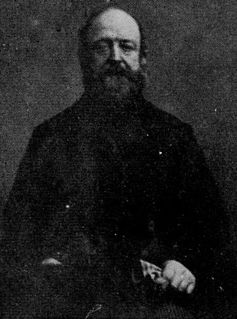
James Francis Stephens was an English entomologist and naturalist. He is known for his 12 volume Illustrations of British Entomology (1846) and the Manual of British Beetles (1839).

William Kirby was an English entomologist, an original member of the Linnean Society and a Fellow of the Royal Society, as well as a country rector, so that he was an eminent example of the "parson-naturalist". The four-volume Introduction to Entomology, co-written with William Spence, was widely influential.
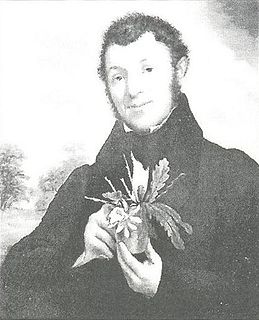
Adrian Hardy Haworth was an English entomologist, botanist and carcinologist.

Francis Walker was an English entomologist. He was born in Southgate, London, on 31 July 1809 and died at Wanstead, England on 5 October 1874. He was one of the most prolific authors in entomology, and stirred controversy during his later life as his publications resulted in a huge number of junior synonyms.However his assiduous work on the collections of the British Museum had great significance.
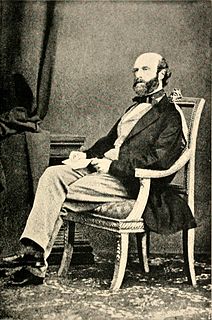
Alexander Henry Haliday was an Irish entomologist. He is primarily known for his work on Hymenoptera, Diptera, and Thysanoptera, but worked on all insect orders and on many aspects of entomology.

The Belfast Natural History and Philosophical Society was founded in 1821 to promote the scientific study of animals, plants, fossils, rocks and minerals.
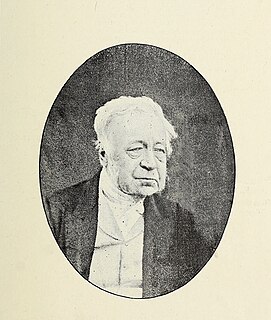
James Charles Dale was an English naturalist who devoted almost all of his adult life to entomology.

William Sharp Macleay or McLeay was a British civil servant and entomologist. He was a prominent promoter of the Quinarian system of classification.

The Royal Entomological Society is devoted to the study of insects. Its aims are to disseminate information about insects and improving communication between entomologists.

Frederick William Hope was an English clergyman, naturalist, collector, and entomologist, who founded a professorship at the University of Oxford to which he gave his entire collections of insects in 1849. He described numerous species and was a founder of the Entomological Society of London in 1833 along with John Obadiah Westwood.
Thomas Marsham was an English entomologist, specializing on beetles.

Andrew Dickson Murray FRSE FRPSE FLS was a Scottish lawyer, botanist, zoologist and entomologist. Murray studied insects which caused crop damage, specialising in the Coleoptera. In botany, he specialised in the Coniferae, in particular the Pacific rim conifer species.
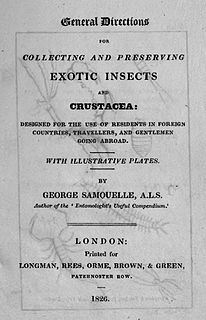
George Samouelle was a curator in the British Museum of "no real scientific aptitude".
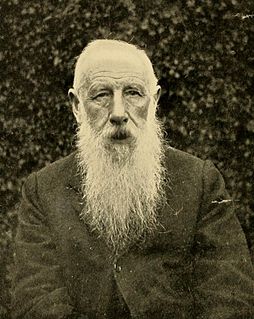
David Sharp was an English physician and entomologist who worked mainly on Coleoptera. He was among the most prolific publishers in the history of entomology with more than 250 papers that included seven major revisions and reviews and a highly influential work on the structure and modifications of the male genital structures among the beetle families. He was the editor of the Zoological Record for three decades.

William Dandridge Peck was an American naturalist, the first native-born entomologist and a pioneer in the field of economic entomology. In 1806 he became the first professor of natural history at Harvard, a position he held until his death in 1822.

Walter Douglas Hincks was a British entomologist and museum curator. He was a world expert on the Dermaptera.
Herbert Willoughby Ellis was a British entomologist.


















